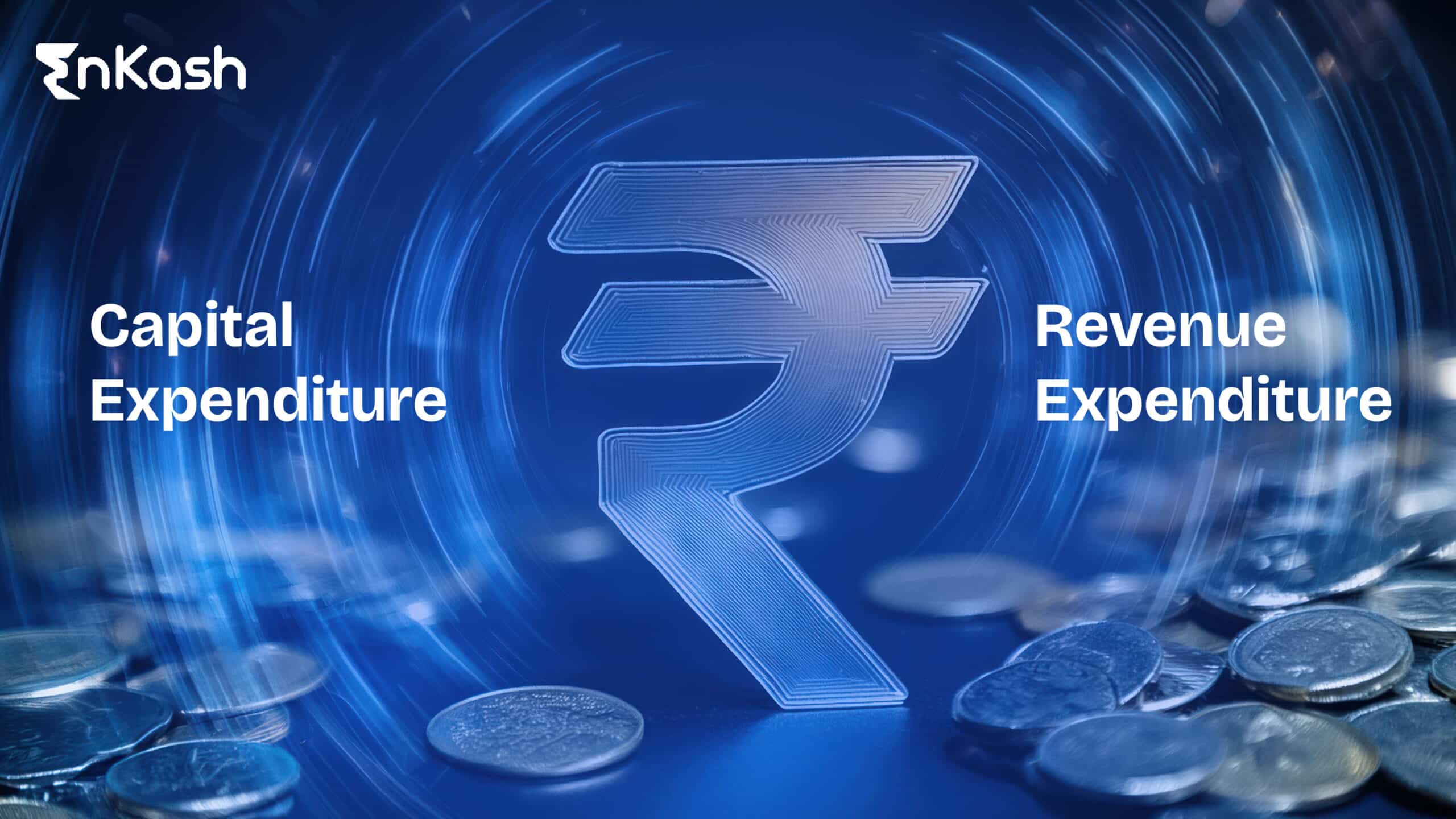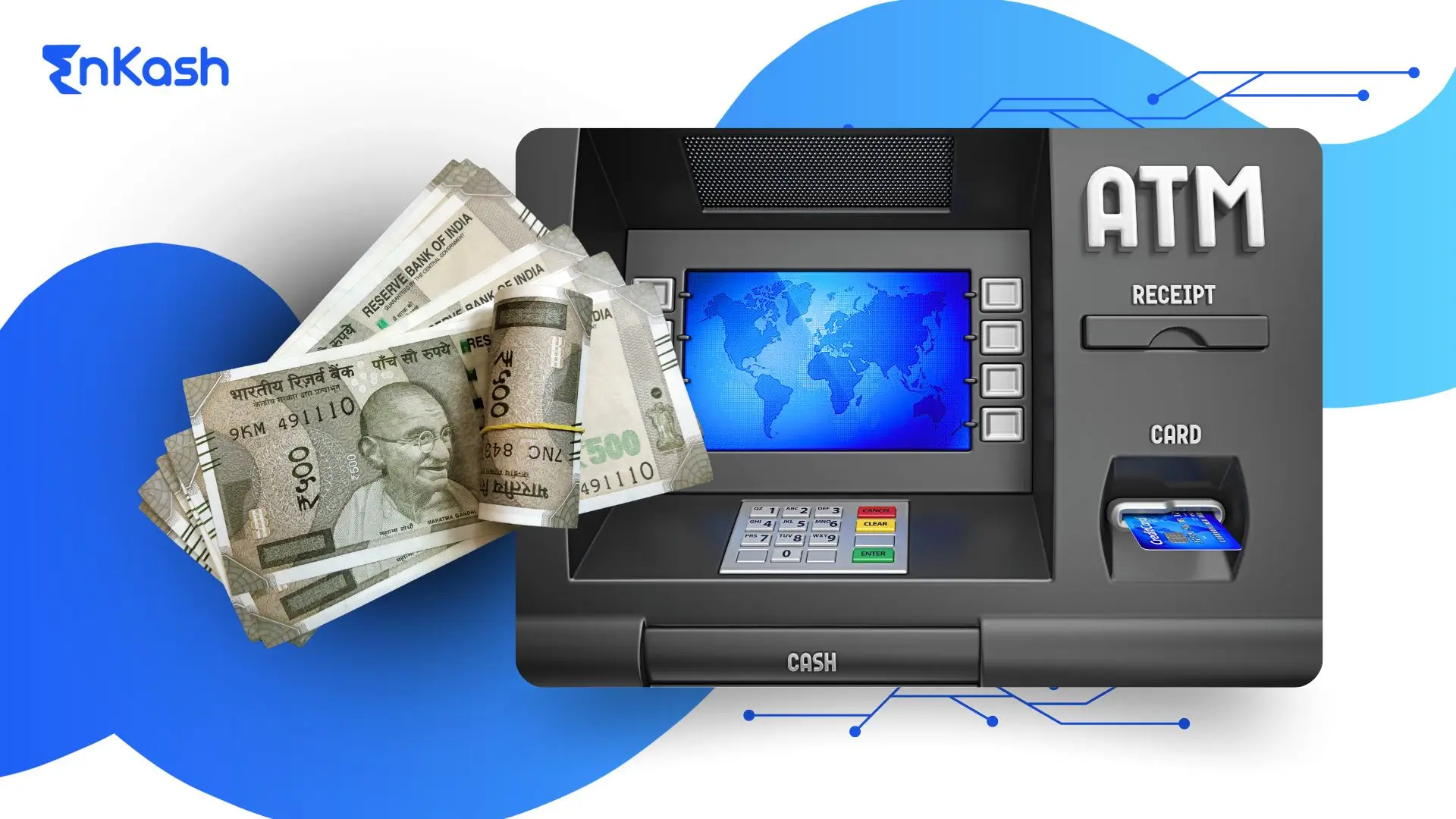The leading difference between capital and revenue expenditure lies in its long-term versus short-term impact on a firm’s financial health. Huge investments in long-term assets like property, machinery, or infrastructure, expected to provide benefits for many years, would fall into capital expenditures. On the other hand, revenue expenditures include ordinary and operating expenses, such as salary or maintenance, that allow a business to run daily but give no future economic benefits.
What is Capital Expenditure?
The capital and revenue expenditures of a firm in the financial system are quite different. They comprise capital that is applied for long-term growth and firm activities. The two categories outline the company’s clear methods of allocating funds. Capital expenditures refer to significant investments any company makes to acquire or enhance long-term assets. These include property, machinery, and equipment, and they constitute the capacity of a business to raise revenues over extended reporting periods. Unlike ordinary operations costs, which are expensed and used within a year, capital expenditures are not treated as expenses due to their long-term value to the business.
Capital expenditure has several significant features, the most important of which is one-off, high-cost investments that increase the productive capacity of the company or improve its long-run efficiency. These expenditures are capitalized on the balance sheet as assets and would be depreciated over their useful life. The purchase of a new factory or major overhauls of existing plants qualifies as capital expenditure as these will provide benefits over several years.
Types of Capital Expenditure
There are three kinds of Capital Expenditures. They are as follows:
- Acquisition of fixed assets like buildings, land, and machinery.
- Improve or upgrade new infrastructure like machinery upgrade or office renovation.
- Development of new facilities or technology for expanding business capabilities.
Capital expenditures are very important for long-term business growth. They allow businesses to enhance productivity, enter new markets, or focus on efficient operations. Investment in long-term assets places a business at par with growth and profitability for a sustainable future.
What is Revenue Expenditure?
Revenue Expenditure or RevEx, is the normal expense of a business, incurred normally to support its everyday operations. Due to their short-term nature, revenue expenditures are typically used up during the current accounting period and do not contribute to long-term asset value. Instead, revenue expenditure helps the company continue its day-to-day operations so that revenue can be raised without discontinuity.
Revenue expenditure, therefore, encompasses wages, rent, utilities, and office supplies as well as maintenance costs. These expenses sustain the business but are not related to future economic benefits. For example, it is considered revenue expenditure when a company pays for its monthly utilities or the regular repairs on equipment. These costs are expensed on the profit and loss account at the time they are incurred and are deducted from revenues to calculate the net profits of the business.
Also Read: Non-Operating Expenses
Types of Revenue Expenditure
- Operating expenses like wages and salaries, rent, and utilities
- Maintenance and replacement costs for equipment or facilities in keeping them operational
- Overheads that include stationery, legal, and travelling expenses
Revenue expenditures are mainly characterized by their periodic nature. These are costs incurred to keep a business running continuously and ensure that assets remain in a usable condition.
Key Differences Between Capital and Revenue Expenditure
Understanding the core differences between capital expenditure and revenue expenditure is something that is widely considered necessary for the effective management of finances among businesses. These differences alter how expenditures are recorded and treated in accounting and affect the long-term as well as short-term financial health of the company.
Also Read: Difference between Expense and Expenditure
Period of Benefit
Capital expenditures provide benefits for a long period. The long-term investments in assets like buildings, machinery, or equipment add towards generating revenues for the business for several years. Revenue expenditures provide benefits only for a short period and are essential for continuing daily activities. Costs that include salaries, rent, and utilities fall under this kind of expenditure, as they have no future benefit after the current accounting period.
Accounting Treatment
Capital expenditures are capitalized as long-lived assets on the balance sheet. The value of such assets degrades over time, and the depreciation is recognized on the income statement. This allows the gradual write-off of the asset over its useful period. On the contrary, revenue expenditure is immediately expensed, reducing the company’s net income for a specific period. It appears directly on the income statement as operational cost with no form of capitalization or amortization.
Size of Expenditure
Capital expenditures are significant monetary expenses aimed at buying or improving long-term assets. These costs are typically high because of their duration. In the case of revenue expenditure, the opposite is the case. They are small, periodic costs that keep businesses running on a day-to-day basis. Although their aggregate may eventually equal millions of dollars over the years, they tend to be smaller compared to capital expenditures, which is fundamental to keeping a business running.
Also Read: Expense Management
Effect on Financial Statements
Capital expenditures affect the balance sheet and income statement over periods. First, they appear as an asset and then a liability in terms of depreciation or amortization, which goes into profit determination. Whereas, revenue expenditures immediately impact the income statements because they reduce the company’s short-term profitability by showing costs for the incurring period.
Nature of Expenses
Capital expenditures are one-time investments that improve or acquire assets leading to long-term profitability. Some other examples are the purchase of new manufacturing equipment and the construction of new facilities. Revenue expenditures are recurring expenses that provide for the immediate needs of business operations. Examples in this regard include utility bills, employee wages, and maintenance, which ensure that the business is in an even better position to continue operating effectively.
These distinctions facilitate the management of finances in the business, proper accounting, and investment decisions directed to both current requirements for operational activities and long-term growth strategies.
Capital and Revenue Expenditure Accounting Treatment
Accounting treatment of capital and revenue expenditures differs since they affect a company’s financial statements and how these appear over time. This distinction ensures that a business is compliant with accounting standards and improves the overall accuracy of the report.
Capital Expenditure Treatment
An important point is that capital expenditures are recorded on the balance sheet as a long-term investment. Specifically, any capital expenditure a business incurs, such as purchasing a building or equipment, will appear on the balance sheet rather than on the income statement. The assets are treated as fixed assets, and their cost will be capitalized. This means the cost is spread over the useful life of an asset instead of expending the whole amount at one time.
For example, if a company purchases $100,000 worth of machinery whose expected life is 10 years, the cost will be spread across the asset’s life through annual depreciation instead of being expensed in the purchase year. This would ensure the financial impact of such an asset stays by its usage through time, thus giving a better picture of profitability.
Revenue Expenditure Treatment
Revenue expenditures are fully expensed in the accounting period they occur, meaning that these expenditures are recognized on the income statement immediately as operating expenditures. Since revenue expenditures include daily operational costs of a business, they do not create long-term value and are not capitalized.
For instance, if a company incurs $10,000 for office rent, the cost is entirely recognized in the income statement for the current period, reducing the net profit immediately.
Key Accounting Implications
The type of treatment these expenditures receive is vitally important for the financial strategy of a company. Capital expenditures result in assets that would appear on the balance sheet. These are gradually expensed through depreciation, which means they do not reduce short-term profits drastically. Whereas, revenue expenditures directly reduce short-term net income since they are expensed immediately, without long-term capitalization.
Additionally, it distinguishes and accounts correctly for such costs, ensuring compliance with accounting standards like GAAP (Generally Accepted Accounting Principles) or IFRS (International Financial Reporting Standards). It also affects the tax liabilities and financial planning of a firm.
This way, understanding accounting treatment for capital and revenue expenditures is effective for businesses in maintaining clear, understandable, and accurate financial records.
Impact on Financial Statements And Business Strategy
Capital expenditure directly impacts a company’s financial statements and business strategy. On financial statements, CapEx increases long-term assets, which are gradually expensed through depreciation, affecting profitability on the income statement. Strategically, CapEx drives business growth by enhancing capacity, improving efficiency, and supporting expansion.
Impact on Financial Statements
Capital expenditures have a great, lasting impression on the balance sheet since they are reported as assets. That means long-term purchases, such as buildings, machinery, or vehicles, are capitalized. This is to say, the cost is spread over its useful life via depreciation. Its income statement does not appear on the books for a short time since only the depreciation for that period is expensed instead of the whole cost being charged against the year it was purchased. The cost-spreading helps mitigate fluctuations in the firm’s profitability.
Whereas, revenue expenditures directly decrease net income in the period they are incurred because they are entirely expensed on the income statement. Such expenses include operational costs of the organization. Since expenses above revenues are utilized in the present accounting period, they never appear as a part of the balance sheet. Instead, they have a direct effect on the profitability of a firm. Although necessary to keep the operations running, they lower the short-term profit margins and may give a wrong impression of reduced profitability during the significant revenue expenditure period.
Also Read: Cost Control
Effect on Business Strategy
Companies manage an equal balance between capital and revenue expenditures for short-term operational efficiency and long-term growth. Commonly, the expansion strategy for the company aligns with its capital expenditures. Whenever a business acquires a new asset or invests in upgrading infrastructures to raise its production capacity or penetration into new markets, it engages in capital spending. Thus, these become integral decisions from the strategic planning and growth perspective.
On the other hand, a business requires revenue expenditures to sustain its daily business operations. Effective management of revenue expenditures will ensure that the business is operationally efficient. Recurring costs should be managed with prudence so the company can stay within reasonable overhead that might reduce profit margins. Businesses with high revenue expenditures need to ensure that these operational costs are justified by their revenue generation.
Tax Implications
From a taxation perspective, capital versus revenue expenditure is treated differently. Capital spending often provides tax benefits through depreciation. It spreads the allowance for the cost of an asset over several years. This means taxable income is reduced for a longer period. Revenue expenditure is entirely deductible in the year incurred. Impacts though are entirely short-term since no benefit extends into future periods, as is the case with the capital expenditure.
In summary, both kinds of expenditure should be planned carefully to align with the financial objectives of the organization. While capital expenditures focus mainly on the growth and formation of assets for the company in the long run, the main goal of the revenue expenditure is to ensure the company sustains in the short term.
Examples of Capital and Revenue Expenditures
To further explain the use of capital and revenue expenditure, we will discuss real-life examples of various industries. This will clarify the distinct differences of each type of expenditure, which will explain how they support businesses to operate and survive financially.
Examples of Capital Expenditures
These are investments focused on capital expenditures that will help or increase the capacity to generate revenues over a long period. The following are some examples of capital expenditure:
- Machines and Equipment: a manufacturing firm may install new machines or modernize old machines to increase productivity. The cost of machines is capital expenditure as its benefits will spread over multiple years.
- Vehicles for Business Operations: Logistics companies often purchase new trucks or vans to increase their delivery capacity. These are typically considered capital expenditures because they capitalize on the acquisition of some long-term assets that generate revenues for several years.
- Land and Buildings: A firm can acquire land and office buildings to expand its operations. For example, a manufacturing firm could lease additional land where it would erect another production plant. Expenses related to acquiring the land and constructing the plant are capital expenditures.
- Technology Infrastructure: Tech companies can invest in a few servers, databases, or software systems as a way to ensure long-term growth. This will be a capital expenditure since the servers will be used for years.
Examples of Revenue Expenditures
The other operating expenses involved in the running of a business on a day-to-day basis are the revenue expenditures. These expenses are completely consumed within the current accounting period and therefore do not lead to long-term accumulation of assets. Some examples of revenue expenditures are given below:
- Utility Bills: Monthly costs of a retailing firm for electricity, water, and internet bills. These costs are expenses incurred to run the operation but do not receive any benefit beyond the current accounting period.
- Repairs and Maintenance: If a manufacturing firm needs to get a machine repaired, the cost of the repair would be a revenue expenditure. Although important for continuing the operations, repairs don’t add to the long-term value of the machine.
- Salaries and Wages: Salaries for the employees are the most common revenue expenditure. For instance, the monthly payroll cost of the IT firm regarding its employees would be its revenue expenditure because it is the cost incurred by it to ensure the smooth running of its daily operations.
- Office Supplies and Consumables: They may comprise paper, pen, and many other office consumables that are charged once they have been used in the normal course of executing the business. For example, if a lawyer is purchasing stationery for the office, he will charge this on revenue expense.
Industry-Specific Applications
- Construction Industry: The capital expenditure for the construction industry would be the cost of buying a bulldozer or a crane. However, fuel used to run such equipment will be a revenue expenditure.
- Retail Industry: A retail business that invests in the construction of a new warehouse is making a capital expenditure. The store’s monthly utility bill payment or replenishment of the inventory, however, is a revenue expenditure.
Conclusion
Distinguishing between what is capital expenditure and what is revenue expenditure is crucial for any business seeking accurate financial management and long-term success. While capital expenditures are focused on long-term investment in property, machinery, and infrastructure revenue expenditures involve operational costs of a firm. Proper differentiation between these types of expenditures ensures that businesses can plan for operational needs in the short term as well as benefit from long-term growth. Proper classification also promotes tax planning and financial reporting and preserves the overall financial health of the business.
FAQs
Can capital expenditures ever be classified as revenue expenditures?
No, capital expenses cannot be treated as revenue expenses because they differ at an element level. Capital expenses represent costly investments in the long term and are profitable for a business over numerous accounting periods, whereas revenue expenses are short-term costs incurred in conducting business operations. Proper classification of such expenses may result in incorrect financial statements and an incorrect tax liability.
What do Indian tax laws state about capital and revenue expenditure?
Whereas revenue expenditure is fully allowable as a deduction in the year of its incurrence, and therefore produces immediate tax relief. Businesses should know the difference between these two types so that they can best strategize in their tax planning.
Is depreciation applied to revenue expenditure?
No, depreciation only applies to capital expenditures because they have assets that give benefits for the long run. Revenue expenditures are those that use up within the current accounting period; therefore, there is no need for depreciation. Instead, they are expensed immediately in the company’s income statement.
Why do we distinguish between capital and revenue expenditures when applying for loans?
Lenders and investors analyze a firm’s capital expenditures to get an insight into the company’s prospects for growth and long-term financial solidity. This distinction between capital and revenue expenditure helps in understanding the future earning capacity of the firm and, subsequently, the capacity to pay off loans. Misclassification could degrade the creditworthiness as well as borrowing conditions of the firm.
What are the implications of capital expenditures on the cash flow of a firm?
Capital expenditures have a significant near-term cash flow impact because they are big one-time cash expenditures. Because they are treated as an asset, their cost is spread out over time through depreciation, so that cash flow is affected less dramatically over the life of the expenditure.
Are R&D expenses capital or revenue expenditures?
Expenses on research and development are categorized as either capital or revenue expenditure according to the nature of the project. If R&D goes into the production of a new product or technology that will support revenues for a long period, then it can be classified as a capital expenditure. Routine R&D that is used to support ongoing operations is usually classified as revenue expenditure.
How do businesses choose what would be classified as capital or revenue?
Businesses determine their internal thresholds in terms of materiality to classify expenditures. For example, expenditure over a particular level may qualify to be classified as capital since it accrues benefits for the business in the long term. Below the threshold, expenses are usually characterized as revenue and reflect consumption within the business immediately.
How does the capital and revenue expenditures misclassifications impact a business?
Expenditure misclassifications may lead to wrong financial statements and misleading profitability reports. The treatment of capital expenditure as a revenue expense would inflate the current-period operational costs thereby reducing apparent profitability. Its impact can spread to tax liabilities, investors’ perception, and even a company’s ability to get loans.
Can capital expenditures be incurred without a loan?
Yes, capital expenditures are also financed through retained earnings, equity financing, and cash reserves of the organization.
What’s the role of capital expenditures in a startup?
Capital expenditure is critical in scaling up businesses in the startup industry because it helps in investing in technology, new equipment, or facilities to deal with expansion. Such capital expenditures help startups create an infrastructure required for expansion and long-term revenue generation.








